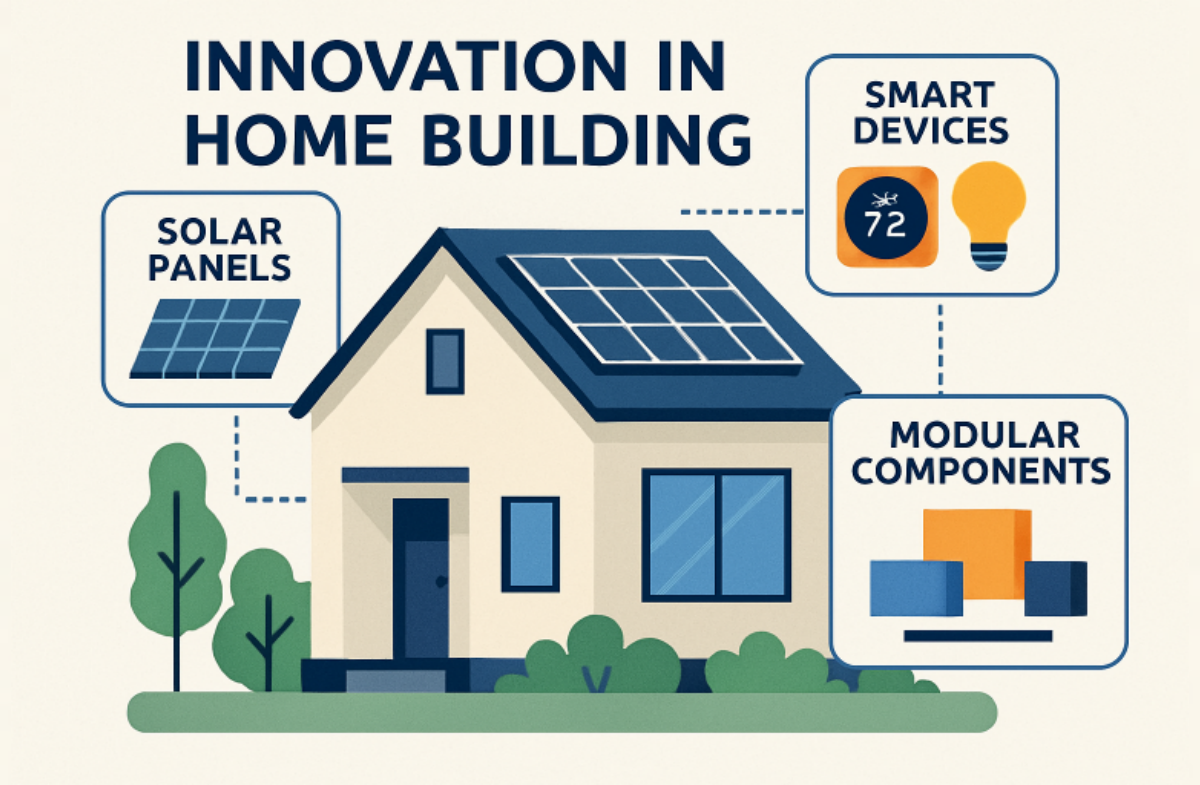Key Takeaways
- Emphasis on sustainable and energy-efficient materials.
- Integration of smart home technologies for enhanced convenience.
- Designing multifunctional spaces to adapt to changing needs.
- Incorporation of biophilic design elements to connect with nature.
- Utilization of modular and 3D printing technologies for efficient construction.
The landscape of custom home building is undergoing a rapid evolution, driven by creativity, technology, and a growing demand for more sustainable lifestyles. Today’s homeowners are not just imagining their dream homes—they’re insisting on smarter, healthier, and more future-forward features in every blueprint. This shift is particularly evident in upcoming housing projects, where industry leaders are setting exciting benchmarks that blend cutting-edge design with functional innovation.
Whether it’s a focus on energy-efficient materials or state-of-the-art automation, these trends are shaping homes that are not only beautiful but remarkably responsive to the occupants’ needs. As design philosophies transform and construction technology advances, homeowners, builders, and designers are collaborating more closely than ever to create personalized spaces that embody resilience, sustainability, and modern luxury.
Sustainable and Energy-Efficient Materials
Sustainable building is transitioning from niche preference to industry standard, as homeowners seek to minimize their environmental footprint while maximizing comfort and efficiency. Builders are increasingly using low-emission materials such as reclaimed wood, bamboo, recycled steel, and advanced composites. These choices not only conserve resources but can be aesthetically pleasing and structurally superior. Energy-efficient construction techniques, including high-performance insulation, triple-pane windows, and solar-ready roof designs, are being incorporated into the earliest stages of planning.
The application of Passivhaus principles—superior insulation, airtight construction, and efficient ventilation—has surged. These strategies ensure homes use minimal energy for heating and cooling, resulting in comfortable living with lower utility bills. As global climate concerns intensify, features such as photovoltaic solar panels and smart HVAC systems are quickly becoming essential components in new homes, aligning with both regulatory pressures and consumer expectations. In fact, many of the latest architecture trends for 2025, highlighted by Livingetc, emphasize this shift toward eco-conscious design, showing how sustainability is no longer just an add-on but a defining characteristic of modern construction.
This evolution in building practices reflects a growing recognition that homes must serve both people and the planet. By adopting these innovations today, homeowners are not only investing in comfort but also securing long-term value and resilience for the future.
Smart Home Integration
Technology is at the heart of modern custom homes, fundamentally changing the way residents interact with their living spaces. Integrating smart systems allows for intuitive control over lighting, climate, security, and entertainment, all at the touch of a button or through simple voice commands. Today’s home automation goes beyond convenience, offering measurable boosts in energy conservation and security while supporting a streamlined, clutter-free aesthetic.From intelligent thermostats that learn usage patterns to appliances connected via advanced home networks, these innovations can be monitored and managed remotely to improve daily life. With new builds, infrastructure for IoT (Internet of Things) devices is now commonly included, allowing for easy functional upgrades in the future. According to Investopedia, a smart home is defined as a residence equipped with devices that automate and control essential functions, making everyday living more efficient and secure. As consumer expectations grow, it’s clear that smart homes are no longer reserved for tech enthusiasts; they’re a standard request for savvy buyers entering the custom market.
Multifunctional Spaces
Versatility and adaptability are crucial as the roles of the home continue to expand. Households need spaces that can flexibly serve as home offices, gyms, media lounges, or guest rooms—sometimes simultaneously. Sliding doors, retractable walls, convertible furnishings, and creative storage solutions all contribute to helping residents maximize utility without sacrificing style. Open-plan layouts remain popular, but there’s rising interest in spaces that can be quickly partitioned for privacy or focus, especially as remote work remains prevalent.
These flexible designs are essential for families planning for changing lifestyles, ensuring that each room remains functional as needs shift over time. Many designers collaborate closely with clients to create bespoke solutions that enable seamless transformation—from hidden Murphy beds to expandable dining areas—all tailored to individual tastes and future-ready thinking.
Biophilic Design Elements
Bringing nature indoors is more than a trend; it’s becoming a key component of holistic health and wellbeing in modern home planning. Biophilic design leverages natural light, open sightlines to outdoor spaces, indoor plant arrangements, and materials like locally sourced stone or timber to build a tangible connection with the environment.
Mental health studies emphasize the calming, restorative benefits of greenery and airflow in living spaces. Thus, features such as green roofs, in-home gardens, living green walls, or water elements are rising in demand. These choices enhance tranquility while also helping to regulate indoor temperatures and improve air quality—a vital feature as urban environments continue to expand.
Modular and 3D Printing Technologies
Innovation is not limited to home features and finishes; it increasingly shapes the construction process itself. Modular building—where home components are engineered offsite and assembled quickly onsite—helps minimize waste and reduce labor costs while ensuring consistent quality. These projects appeal to homeowners who value speed, efficiency, and design flexibility.
Meanwhile, 3D printing technology is revolutionizing the industry by allowing entire structures, from walls to decorative elements, to be printed with precision using eco-friendly composites and recycled materials. This method delivers unique design freedom, cost savings, and rapid build times—attributes that are especially valuable amid labor shortages and rising conventional construction costs.
As these innovative trends come to life in upcoming housing projects, the future of custom home building is set to be more flexible, sustainable, and technologically advanced than ever before. Homeowners who embrace these trends ensure that their living spaces are beautiful reflections of personal style—and smart investments in wellness, efficiency, and adaptability.
